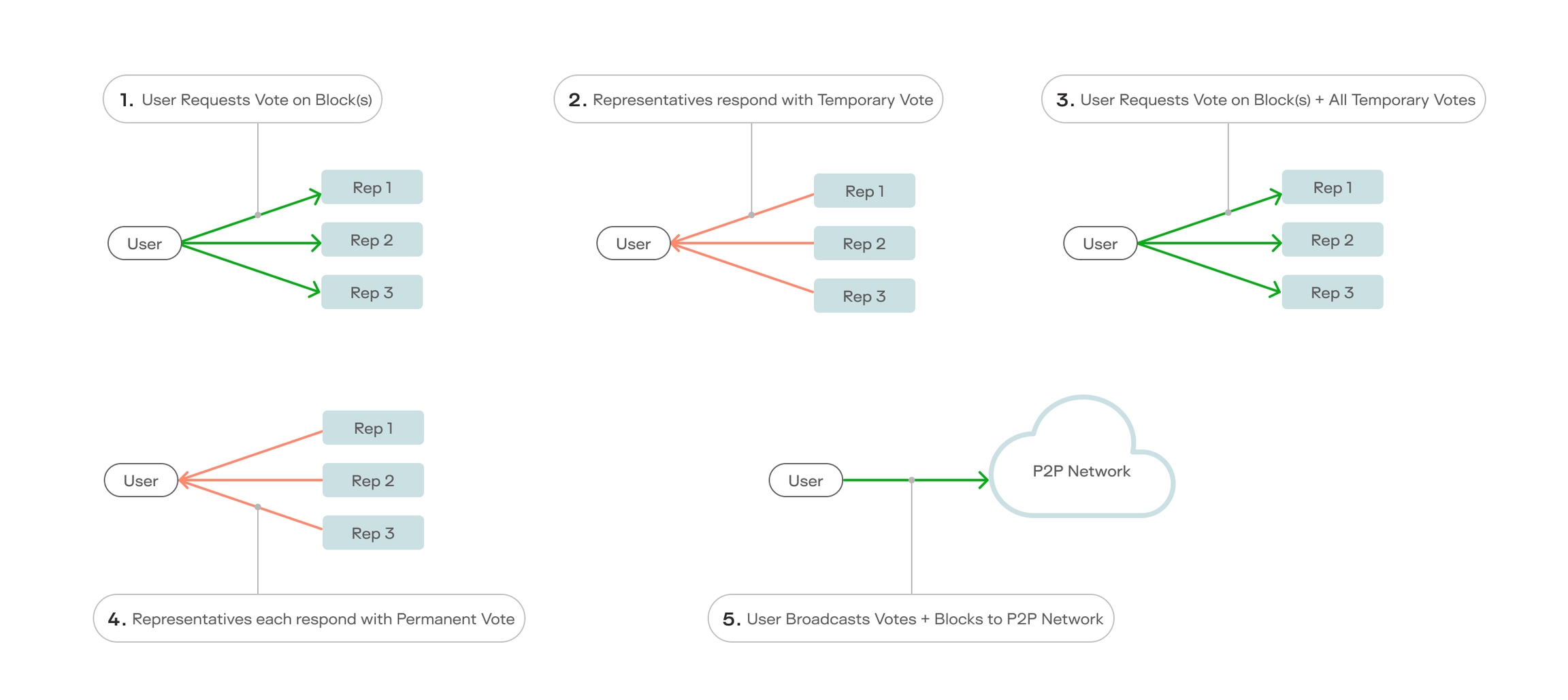Consensus
At its core, the Keeta Network utilizes a Delegated Proof of Stake (dPoS) voting protocol, which allows for quick consensus while ensuring decentralization. Keeta's block validation process follows a structured five-step sequence that ensures security and efficiency.
The process begins when a client initiates a vote on a new block(s), sending their request to multiple network representatives. These representatives respond with temporary votes, providing initial validation of the proposed blocks. The client then requests verification of all temporary votes, creating a cross-validation layer. Following this, representatives submit their permanent votes, confirming their final decision on block validity. In the final step, the client broadcasts both the validated blocks and their associated votes to the network, where they are permanently added to the blockchain.
